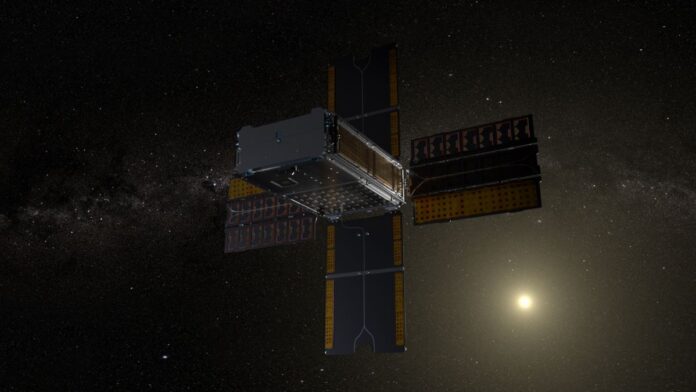You can follow NASA’s BioSentinel satellite as it flies around the sun with a microorganism-radiation experiment onboard.
The shoebox-sized cubesat flew past the moon after hitching a ride on Artemis 1, which launched Nov. 16, 2021, to kick off the space agency’s newest push toward crewed exploration of space. Both missions share a common goal: to learn about the space environment so that astronauts can fly as safely as possible on Artemis 2 and beyond. Artemis 1 lasted 26 days and ended with an epic splashdown on Dec. 11 in the Pacific Ocean. But BioSentinel’s mission is still happening. Now, the public can follow the small satellite as it flies brewer’s yeast through space.
Through its “Eyes on the Solar System” visualization tool, NASA invites the public “to virtually ride along with BioSentinel’s deep space journey.” The space agency announced (opens in new tab) BioSentinel’s inclusion in the feature, which also shows the positions of the planets relative to other NASA spacecraft, on Dec. 15.
Related: Artemis 1’s BioSentinel cubesat aces lunar flyby, readies for biology mission
The announcement offers a brief explainer on how to use the tool.
“You can adjust the level of illumination on the spacecraft by clicking on the show/hide settings button in the bottom right of the screen,” NASA officials wrote. “Once opened, you can toggle between flood, shadow, and natural lighting. Additionally, you can use time controls — at the bottom of the screen — to fast-forward or rewind time in the simulated view, to preview BioSentinel’s future trajectory or see a recap of its prior path.”
BioSentinel houses cells of the yeast Saccharomyces cerevisiae in tiny compartments that activate the yeast in a controlled manner. As the microorganism flies through deep space, beyond the protection of Earth’s magnetic field, it will be exposed to solar and cosmic radiation. This in turn might affect how the yeast’s cells grow and metabolize.
The spacecraft will store data about the microorganism’s behavior, and transmit it to the BioSentinel team. This information will give a sneak peek into what human cells might experience on later Artemis program missions should astronauts travel farther from Earth and for longer periods of time.
BioSentinel began science operations in deep space on Dec. 5.
Follow Doris Elin Urrutia on Twitter @salazar_elin. Follow us on Twitter @Spacedotcom or on Facebook.

